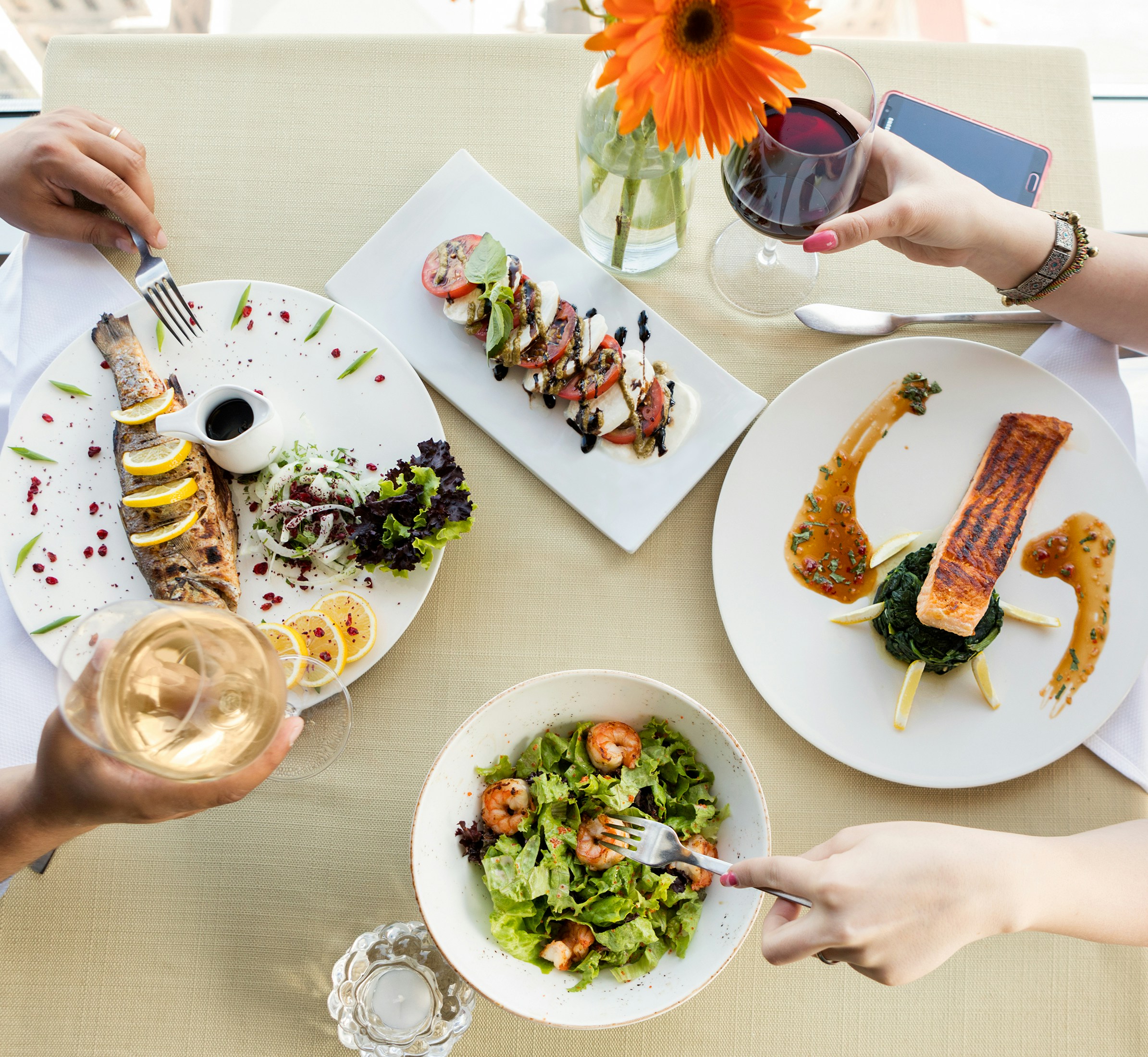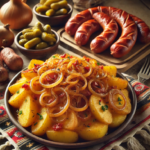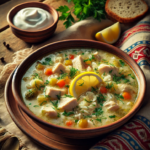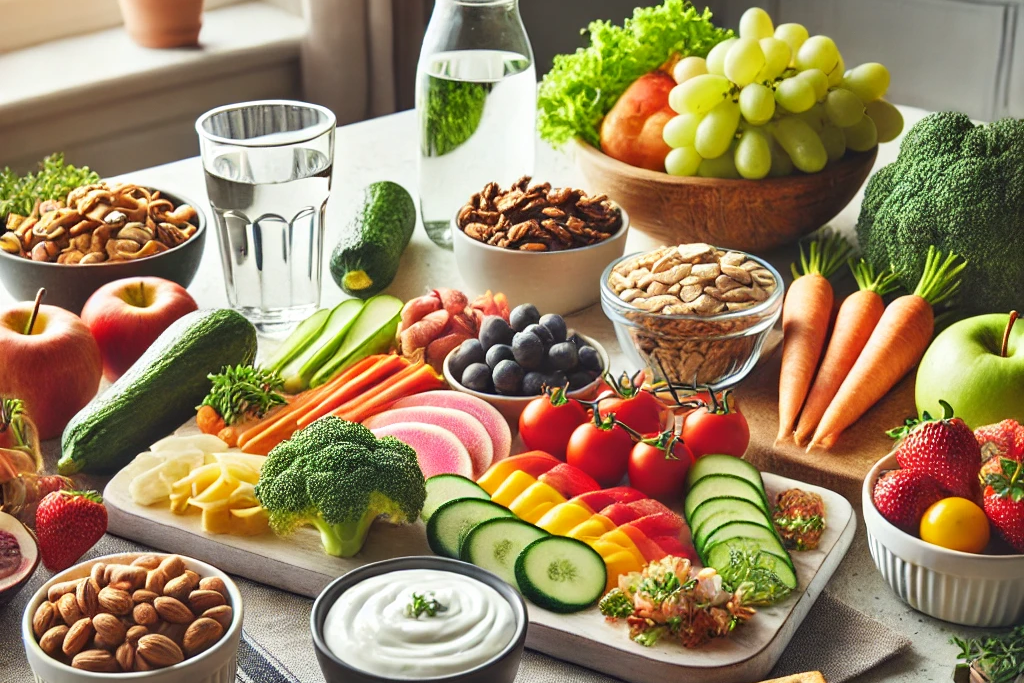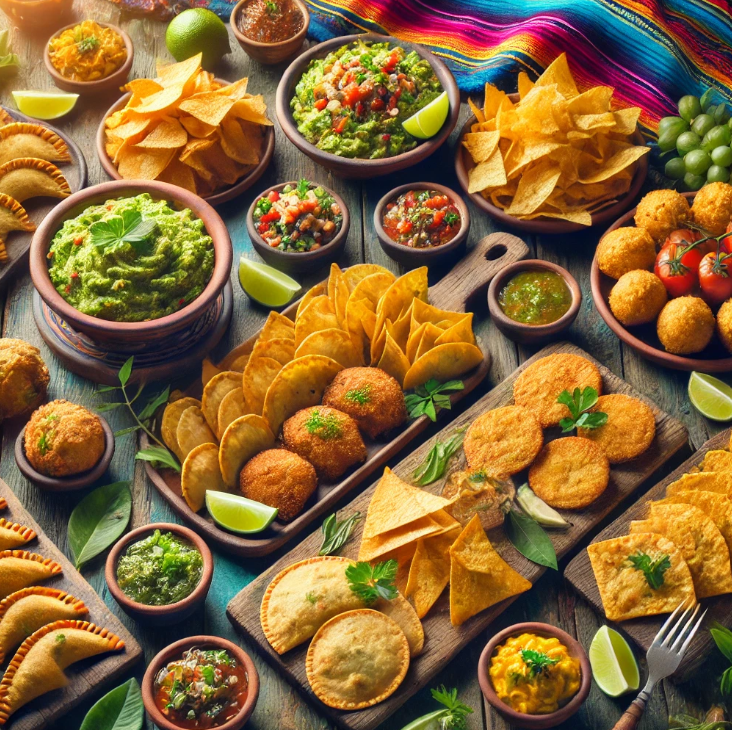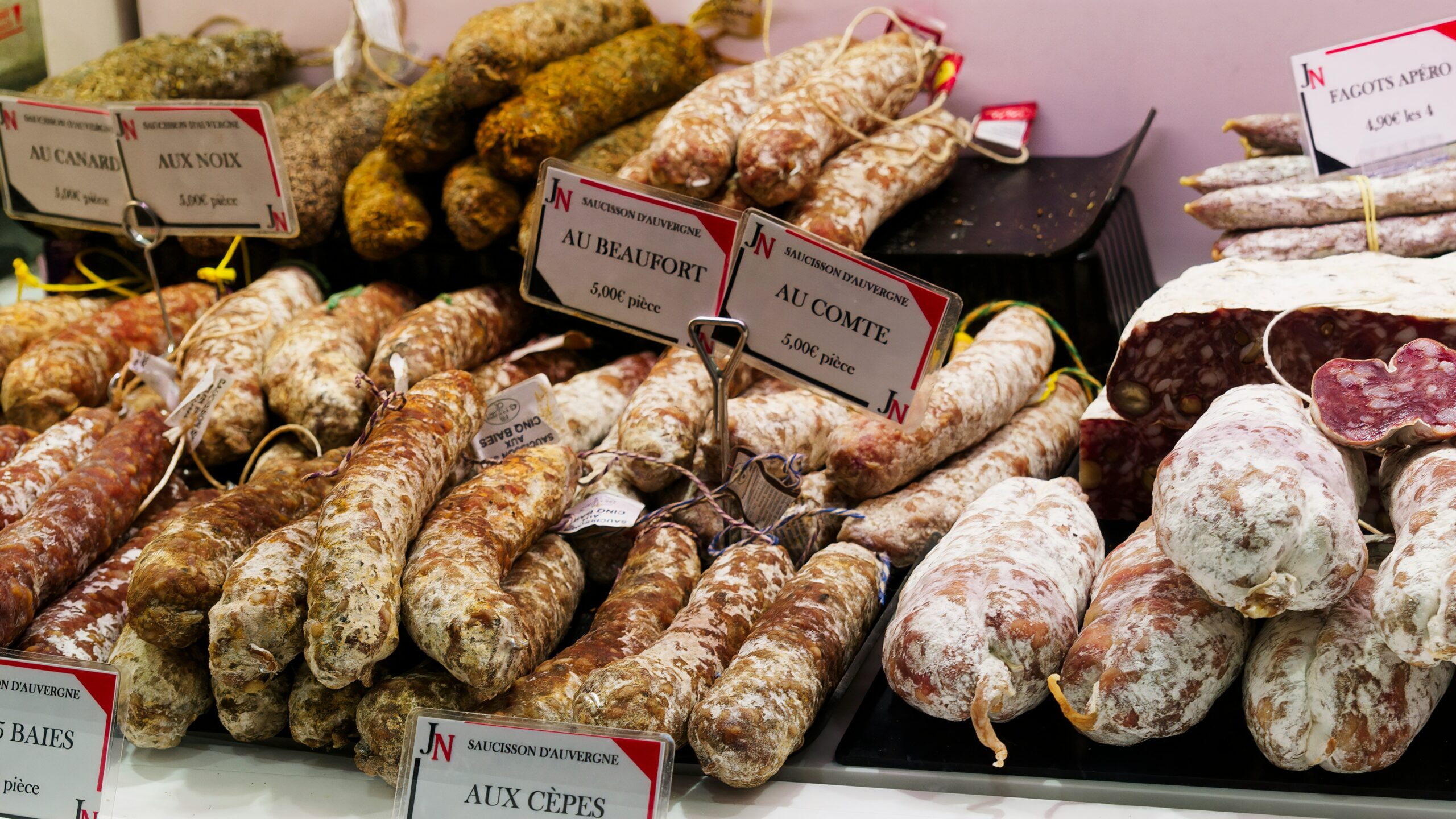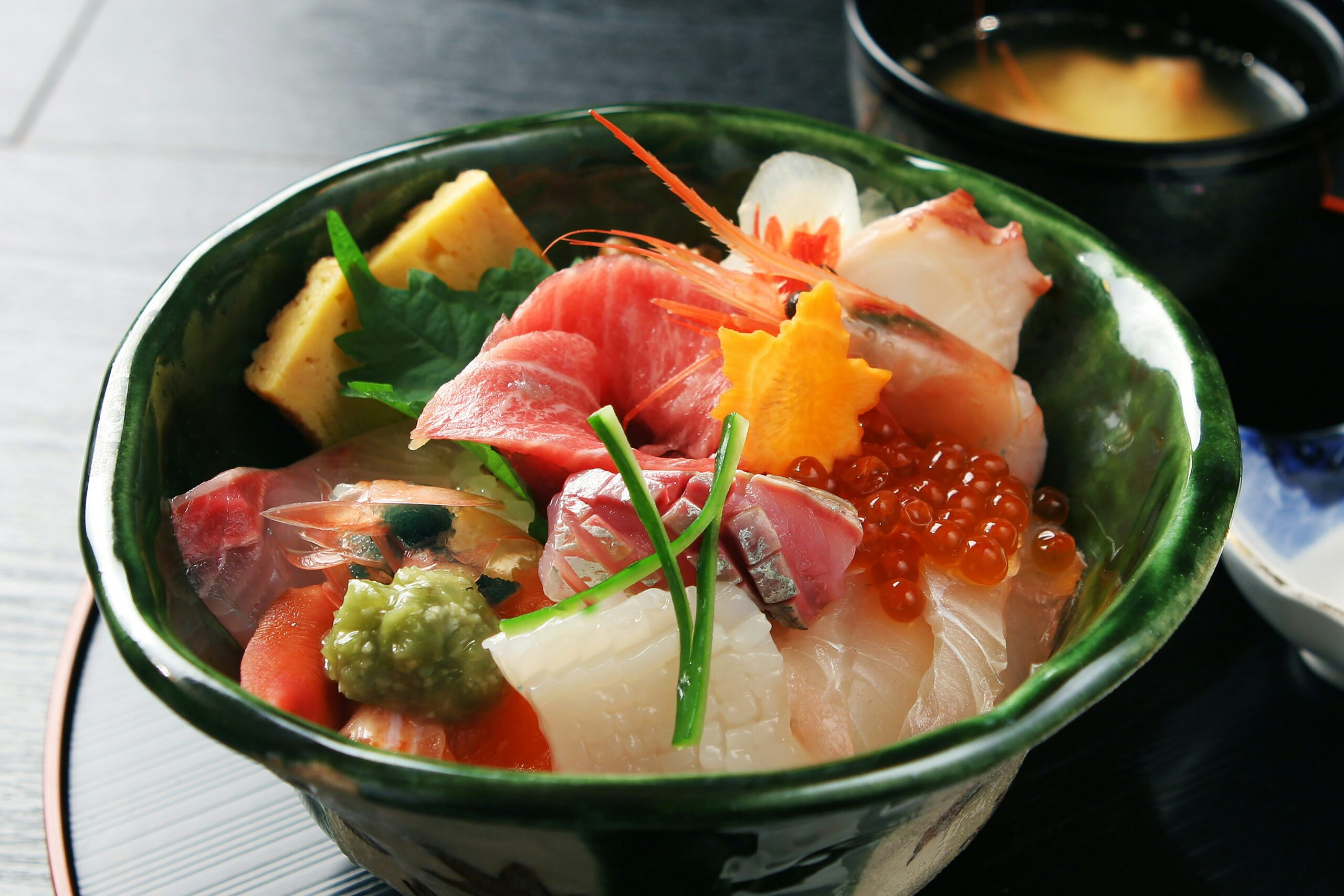The Taste of Romania: Traditional Culinary Recipes
Introduction to Romanian Gastronomy
Romanian cuisine is a mosaic of cultural and regional influences, reflecting the country’s complex history and ethnic diversity. Over time, Romania has been touched by many cultures—including Greek, Ottoman, Austro-Hungarian, and Slavic—each contributing distinct culinary traditions. These influences have evolved and merged, creating a rich gastronomic heritage where traditional recipes are preserved and passed down through generations.
A fundamental aspect of Romanian gastronomy is the close bond between food and social life. Traditional dishes are more than just sustenance—they are symbols of hospitality and family unity. Festive meals often bring family members and friends together to enjoy delicious preparations, emphasizing community and the cherished traditions of cooking and sharing food.
The diversity of ingredients in Romanian cooking is key to its authenticity and complexity. From pork and poultry to fresh vegetables and aromatic spices, every recipe showcases a unique blend of flavors and textures. Local, seasonal ingredients are skillfully integrated into dishes, reflecting not only culinary identity but also respect for the environment. As a result, Romanian gastronomy continues to evolve by blending tradition with innovation.
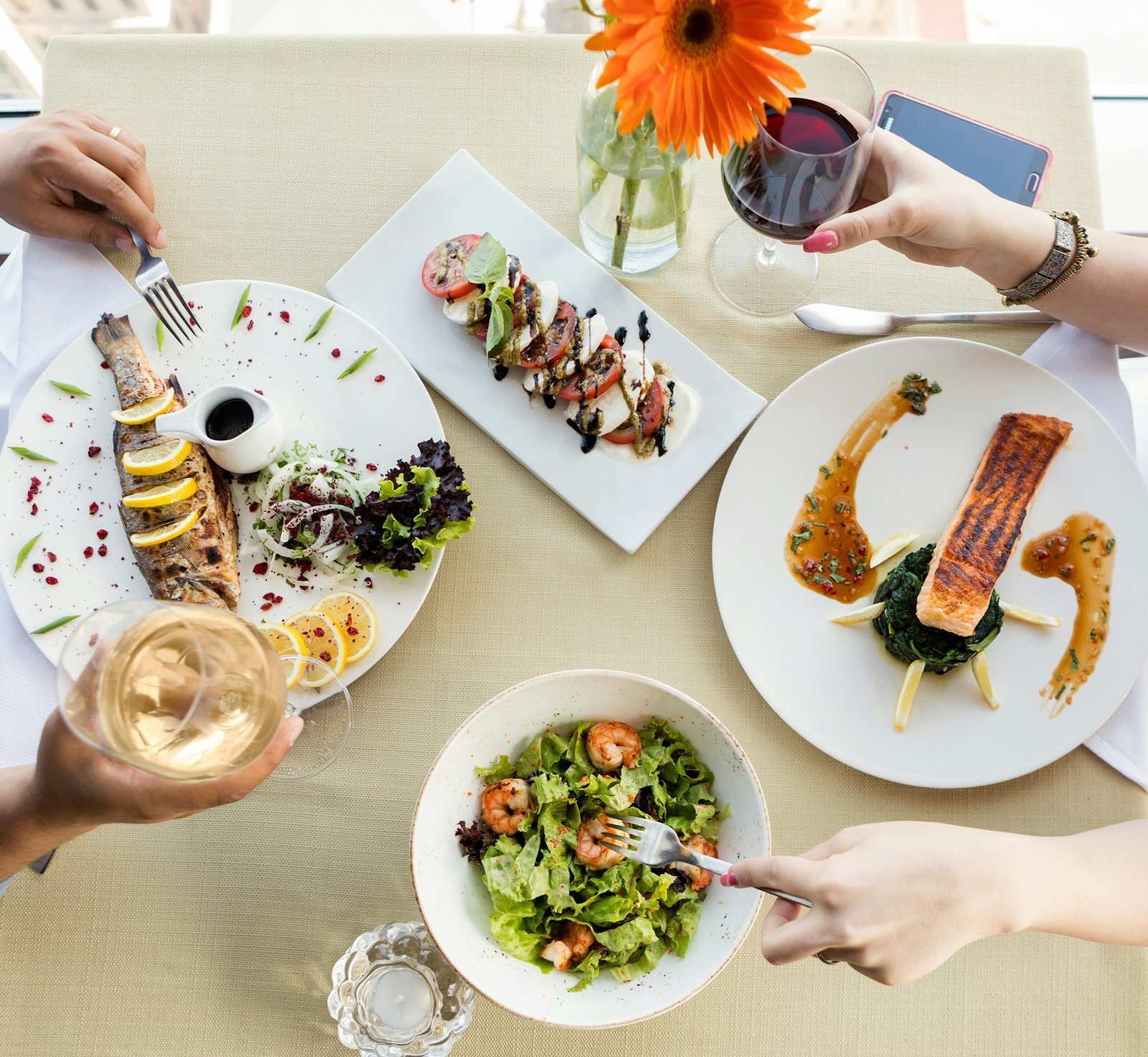
Basic Ingredients of Romanian Cuisine
Romanian cuisine is distinguished by a variety of fundamental ingredients that form the basis of traditional dishes. Among the most important ingredients are mămăliga, meat, vegetables, and spices, each playing a significant role in the country’s gastronomic history.
Mămăliga, a staple in the Romanian diet, is made from cornmeal and holds an especially important place in culinary tradition as a substitute for bread. Served alongside various sauces or meat dishes, mămăliga is not only nourishing but also a symbol of Romanian hospitality. It contributes to the rustic character of the dishes and the gastronomic satisfaction of traditional meals.
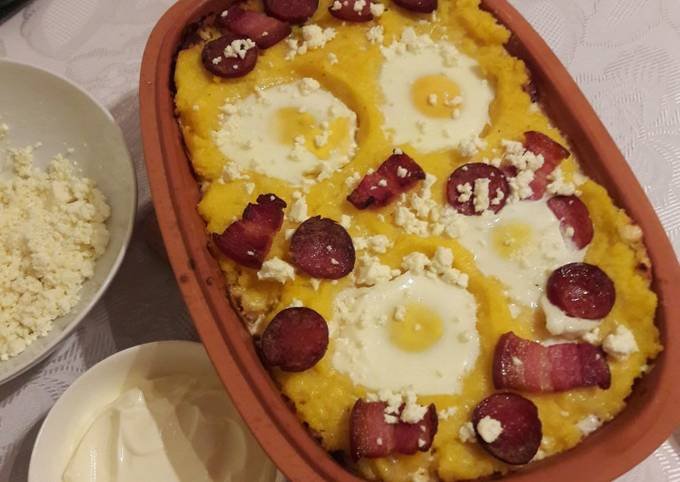
Meat plays a central role in Romanian dishes, ranging from pork and beef to poultry and fish. Prepared in various ways—grilled, boiled, or minced—meat is often featured in ancestral recipes that have been passed down through generations. These dishes are frequently accompanied by rich sauces that accentuate the natural flavors of the meat and offer a unique culinary delight.
Vegetables also represent an essential component of Romanian cuisine, both for their nutritional value and their contribution to a diverse range of flavors.
From tomatoes, peppers, and onions to cabbage and potatoes, vegetables are used in cooked dishes as well as in salads, providing a healthy balance to Romanian meals.
In addition, spices such as dill, thyme, and garlic add depth of flavor and character to every dish, enriching the overall culinary experience.
Therefore, the basic ingredients of Romanian cuisine are not only essential for preparing meals but are also an integral part of Romania’s cultural identity. This unique combination of foods contributes to the much-appreciated taste of the dishes, making them remarkable both locally and internationally.
Romanian Appetizer Recipes
Romanian appetizers are an essential element of traditional cuisine, offering a range of flavors and textures that reflect the country’s rich cultural heritage. Among the most popular appetizers are zacusca, eggplant salad, and mici, each with its own distinctive ingredients and methods of preparation.
Zacusca is a delicious vegetable-based dish that can be enjoyed as an appetizer or simply spread on a slice of bread. Its main ingredients include eggplant, peppers, tomatoes, and onions, all roasted to intensify their flavors. Cut the vegetables into cubes and roast them at a medium temperature until they become soft. Then, mix them with olive oil, salt, and your favorite spices. Store the zacusca in jars for the winter, providing a healthy, spice-rich snack even during the colder months.
Eggplant salad is another beloved appetizer, prepared from roasted eggplant that is finely chopped and combined with onions, oil, and spices. For a smoother texture, it’s recommended to use a blender or food processor. Once the salad is made, chill it in the refrigerator to allow the flavors to meld. This dish is ideal as a side for stuffed cabbage rolls or simply as an appetizer on toasted bread.

Finally, mici are another hallmark of Romanian appetizers, renowned for their enticing flavor. They are made from a blend of pork, beef, and lamb, minced and seasoned with garlic, cumin, and other spices. Small patties are formed and then grilled until they turn crispy on the outside. Mici are often served with mustard and bread, making them a popular choice at barbecues and festivals.
These appetizers are not only delicious but also embody Romanian culinary tradition, forming an important part of any festive or casual meal. Trying these recipes will help keep local gastronomic traditions alive.
Romanian Main Courses: The Transition from Tradition to Modernity
In Romanian gastronomy, main courses hold a special significance, often linked to age-old traditions and customs. Among the most beloved dishes are sarmale, cozonac, and polenta with cheese and sour cream. These dishes not only delight the palate but also evoke memories and nostalgia associated with family meals or celebrations.
Sarmale, for example, are a symbol of Romanian hospitality, made from minced meat, rice, and spices, wrapped in fermented cabbage leaves. The classic sarmale recipe is often passed down from generation to generation, with each cook adding her own secrets that enrich the flavor and texture of the dish. In recent decades, modern versions of sarmale have emerged, incorporating international ingredients such as quinoa or chicken, which give them a different taste while still preserving the essence of the traditional recipe.

Another emblematic dish is cozonac, a type of sweet bread filled with walnuts, cocoa, or poppy seeds. In the past, cozonac was prepared especially for holidays, but today it has become a popular choice for any occasion. Contemporary versions introduce subtle innovations, such as hints of orange, lemon, or even chocolate, giving this classic dessert a fresh new twist.
We also must not forget mămăliga, a fundamental food in the Romanian diet, typically served with cheese and sour cream. Although mămăliga is traditionally made from cornmeal, its role in modern gastronomy has evolved. Innovative cooks are creating baked versions or even mămăliga risotto, presenting this dish in a new light without diminishing its authenticity.
Thus, the transition from traditional meals to modern recipes in Romanian cuisine reflects not only changes in local tastes but also external influences, contributing to a culinary diversity that enriches the nation’s gastronomic culture.
Delicious Romanian Desserts
Romanian cuisine is rich in desserts that reflect local traditions and culture. Among the most beloved desserts are cozonac, gâtușa, and apple cake, each with its own unique character and an interesting story. These sweet treats not only delight the taste buds but are also often prepared for holidays and other special occasions, strengthening family and community bonds.
Cozonac, an emblematic dessert, is made from a leavened dough filled with walnuts, raisins, and cocoa. There are numerous variations of cozonac, often adapted to family recipes, yet the essence remains the same. Its preparation requires time and patience, but the result is a spectacular final product with a fluffy texture and a bittersweet flavor. It is important to use fresh ingredients and to follow proper proofing times to achieve the perfect cozonac.
Another beloved dessert is gâtușa, which stands out for its layers of thin pastry filled with sweet cheese and sour cream, and is often served with vanilla sauce. This recipe offers a perfect balance between sweet and tangy, making it popular with both adults and children. An innovative twist on gâtușa may include seasonal fruits, adding a burst of freshness and a broader palette of flavors.

Of course, apple cake is a must in the lineup of Romanian desserts. It is prepared using a simple mixture of dough, grated apples, and spices, resulting in a delicious and comforting treat. Its timeless flavor and cinnamon aroma evoke memories of autumn days, family gatherings, and the simple joys of life. Decorating the cake with powdered sugar or toasted nuts adds an attractive touch, making it an ideal choice for any occasion.
These desserts are not only a delight to savor but also a way to keep Romanian culinary traditions alive. Experimenting with these recipes and adapting them to modern tastes can transform each dessert into a unique experience. In conclusion, Romanian desserts are an essential part of our gastronomic culture, and their diversity offers endless possibilities for all lovers of delicious food.
Traditional Romanian Beverages
Romania has a rich culinary tradition that also extends to the world of drinks. Among the best-known traditional Romanian beverages are țuica and wine, each holding a special place in the hearts and on the tables of Romanians. These drinks are not merely meal accompaniments but are symbols of hospitality and family bonds.
Țuica, an alcoholic beverage distilled from plums or apples, is a true emblem of Romanian traditions. Its preparation begins with the fermentation of the fruits, followed by a distillation process that imparts a distinctive aroma. This drink is often served as an aperitif on special occasions or during festive meals. People typically enjoy it alongside cheese, cured pork, or other traditional appetizers, blending flavors and aromas into a delightful culinary experience.
On the other hand, Romanian wine boasts a long history, with Romania recognized as an important destination for viticulture. Regions such as Dealu Mare, Cotnari, and Murfatlar are famous for their high-quality wines, ranging from aromatic whites to robust reds full of character. Wine not only accompanies culinary dishes but also plays a central role in social traditions, often being offered as a sign of respect and appreciation. Additionally, events like wine tastings are organized to promote Romanian wine culture and traditions.
These traditional beverages are essential not only at festive meals but also in everyday life, having a profound impact on Romania’s cultural identity. They unite generations and bring people together, inspiring a sense of belonging and connection to ancestral traditions.
The Connection Between Celebrations and Romanian Gastronomy
Romanian cuisine is closely intertwined with traditional holidays, with each celebration featuring specific dishes that reflect the country’s cultural identity. For example, at Easter, the main dishes include red eggs, cozonac, and lamb. The eggs symbolize rebirth, while cozonac—a traditional dessert—is carefully prepared to achieve a distinctive aroma of walnuts or cocoa. Lamb, associated with sacrifice, is often cooked in various ways, making it a must-have on the Easter table.
On the other hand, Christmas is celebrated with a wealth of recipes that vary from region to region. Pork is typically the star of the festive meal, prepared in a variety of ways, such as in sarmale—meat and rice rolls wrapped in pickled cabbage leaves. These dishes are not merely about food; they hold deep significance by bringing family and community together around the table. Additionally, apple pie or sweet cheese pie serves as a traditional dessert that perfectly complements the festive Christmas atmosphere.
Other celebrations, such as St. George’s Day or Măcinici, are marked by special dishes, including baked goods and traditional beverages. Each dish tells its own story, often linked to local myths or legends, providing additional insight into Romanian customs and traditions. This connection between celebrations and Romanian cuisine not only promotes culinary diversity but also helps preserve these traditions for future generations.
Contemporary Romanian Cuisine
Contemporary Romanian cuisine reflects an intriguing amalgam of traditions and international influences, adapting classic recipes to current preferences and trends. In recent decades, Romanian chefs have begun experimenting with ingredients, techniques, and international feedback, giving rise to an innovative culinary scene that blends the old with the new. This evolution aligns with a quest for authenticity that meets the demands of consumers increasingly interested in sustainable gastronomy and quality dishes.
International influences are varied, manifesting not only in the ingredients used but also in the cooking methods. For example, incorporating elements from Mediterranean and Asian cuisines into classic Romanian recipes has led to dishes that combine diverse flavors and textures. Additionally, there is a noticeable trend toward fusion cooking, where traditional Romanian recipes are reinterpreted with a modern twist, infusing them with a touch of contemporary culinary sophistication.
In this context, dishes such as sarmale or mămăliga are used innovatively, being combined with seasonal ingredients or prepared with modern cooking techniques. For instance, sarmale can be served with aromatic sauces or even reimagined in modern formats, such as “Romanian sushi.” These transformations not only preserve tradition but also rejuvenate it, offering the opportunity to captivate modern palates.
Romanian culinary innovators readily showcase their creativity by combining local products with international techniques, resulting in a diverse array of dishes that reflect Romanian authenticity in innovative settings. This approach not only promotes Romanian gastronomy on the international stage but also brings a fresh vitality to the hearts of food lovers across the country.
Conclusion: Romanian Gastronomy as Cultural Heritage
Romanian gastronomy is not merely a collection of recipes but a profound expression of the nation’s cultural identity. It is a heritage that reflects historical and social influences, spanning from ancestral traditions to the latest culinary innovations. By keeping local ingredients and time-honored cooking methods passed down through generations at the forefront, Romanians manage to honor their culinary traditions and integrate them into everyday life. Thus, every meal becomes an opportunity to celebrate culture and share stories that connect the past with the present.
The importance of preserving culinary traditions within Romanian gastronomy is evident not only in its dietary style but also in how these practices contribute to social cohesion. Recipes passed down from family to family are not just simple dishes; they are narratives of Romanian culture, identity, and values. This deep connection with food provides opportunities to educate younger generations, inviting them to explore the richness and diversity of the national cuisine.
In the long term, promoting and preserving Romanian gastronomy as a cultural heritage is not only a responsibility but also an opportunity. It is essential for both institutions and individual communities to actively support initiatives that foster the appreciation and learning of culinary traditions. This commitment will enrich the gastronomic experience and ensure a lasting connection between the past and the future. In conclusion, Romanian gastronomy, as an integral part of our cultural heritage, requires not only recognition but also an active commitment to ensure its perpetuation for future generations.
Frequently Asked Questions (FAQ):
What cultural influences have contributed to the formation of Romanian gastronomy?
Romanian cuisine is a blend of influences from various cultures, such as Greek, Ottoman, Austro-Hungarian, and Slavic. These influences have been integrated and adapted, generating unique recipes and a varied culinary heritage that reflects Romania’s history and ethnic diversity.
How is Romanian hospitality reflected in its cuisine?
In Romania, food is a symbol of hospitality and family bonds. Traditional meals are social occasions where family and friends gather to enjoy local dishes, celebrating the community and the traditions that surround the act of cooking and sharing food.
What are the basic ingredients of Romanian cuisine?
The fundamental ingredients include mămăliga, meat, vegetables, and spices. Mămăliga is a traditional substitute for bread, and meat, vegetables, and spices (such as dill and garlic) offer a diverse range of flavors that contribute to the uniqueness of Romanian dishes.
What role does mămăliga play in the traditional Romanian diet?
Mămăliga is a staple food made from cornmeal and is considered a symbol of rusticity and hospitality. Often served with sauces, cheese, or meat, mămăliga plays an important role both nutritionally and culturally in Romanian gastronomy.
What are the most popular Romanian appetizers?
Among the most beloved Romanian appetizers are zacusca, eggplant salad, and mici. These dishes reflect the diversity and richness of Romanian cuisine, each with distinct ingredients and preparation methods that give them authentic and unique flavors.
Which main dishes are emblematic of Romanian cuisine?
Among the main dishes are sarmale, cozonac, and mămăliga with cheese and sour cream. These dishes are linked to traditions and holidays, evoking the heritage and unity of the Romanian family. They have also been modernized, sometimes being combined with international ingredients.
What role do traditional holidays play in Romanian gastronomy?
Traditional holidays are special occasions during which Romanian recipes are prepared with care and respect. For example, at Easter, red eggs, lamb, and cozonac are prepared, while at Christmas, emphasis is placed on pork-based dishes. These recipes hold deep symbolism and contribute to maintaining family and community bonds.
What are the most beloved Romanian desserts?
Cozonac, gâtușa, and apple cake are traditional desserts appreciated for their flavors and their association with holidays. Each recipe has its own story and is prepared with attention to detail, reflecting the traditions and customs passed down through generations.
Which traditional beverages are specific to Romania?
Among the traditional Romanian beverages are țuica and wine. Țuica is an alcoholic drink distilled from plums or apples, while wine, produced in renowned regions such as Dealu Mare and Cotnari, has a long tradition and is considered a symbol of Romanian hospitality.
How is Romanian gastronomy adapting to modern influences?
Contemporary Romanian cuisine reinterprets traditional recipes by fusing them with international techniques and ingredients. These adaptations allow for a blend of tradition with modern trends, giving dishes such as sarmale or mămăliga a fresh perspective that appeals to today’s tastes.
